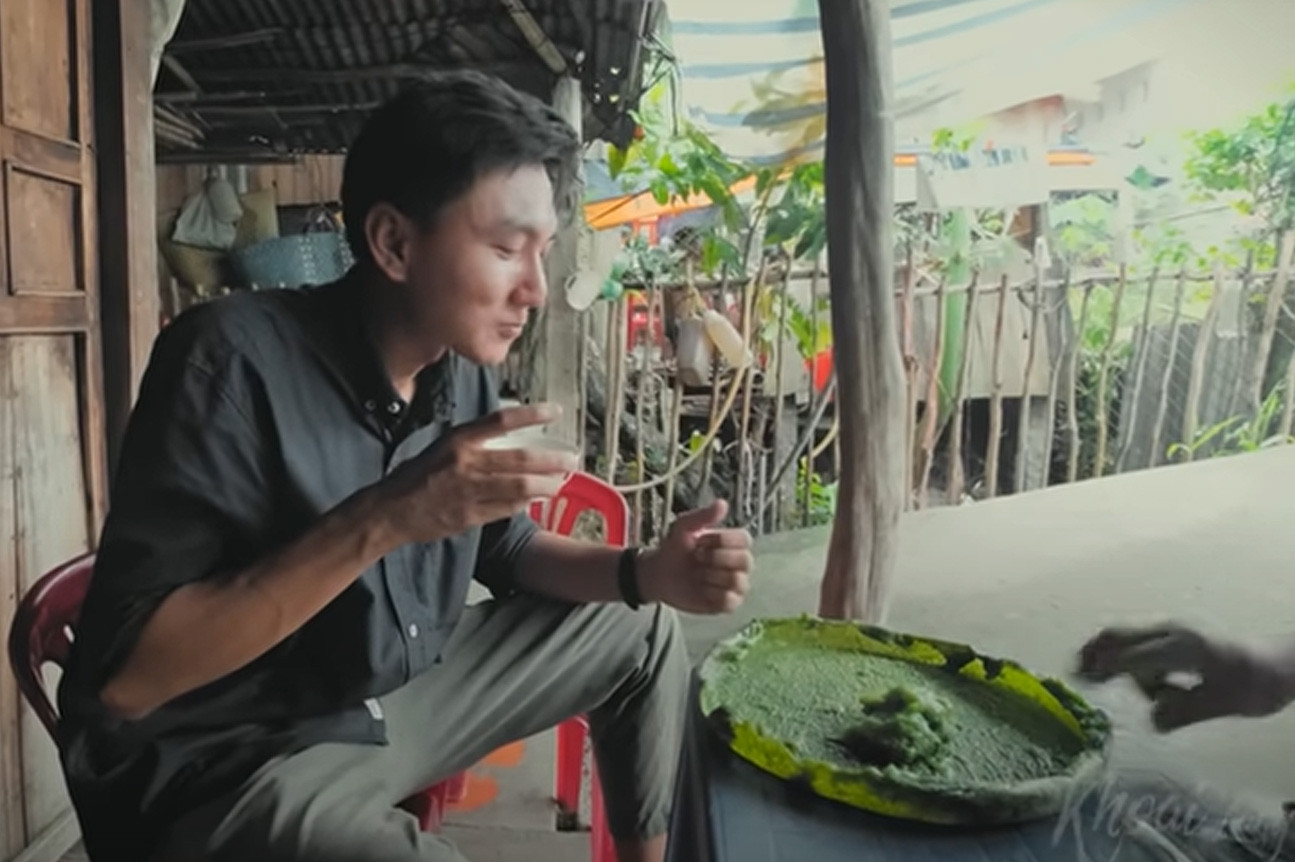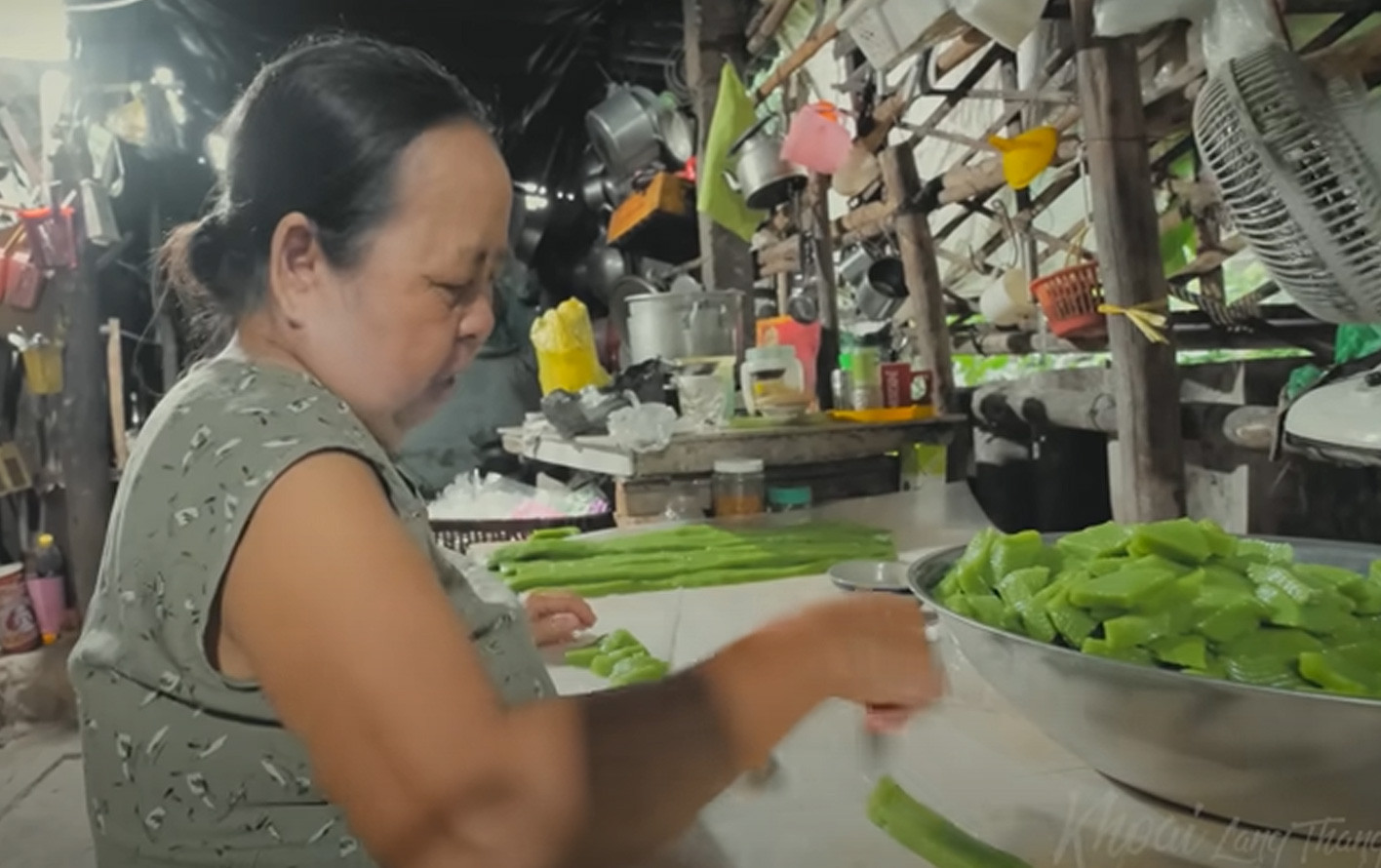Tasting a warm bite of bánh đúc (pandan rice cake), YouTuber Khoai Lang Thang remarked on its soft texture, fragrant pandan aroma, and deep green color - qualities that artificial coloring alone could not achieve.
Visiting the home of Ba Hai (Mrs. Hai) in Chau Thanh District, Dong Thap Province, Khoai Lang Thang (real name Dinh Vo Hoai Phuong) had the chance to witness the traditional process of making pandan rice cakes, a craft Mrs. Hai has been perfecting for over 50 years.
A traditional craft passed through generations

Mrs. Hai’s family has specialized in making traditional Vietnamese cakes, such as bánh đúc (pandan rice cakes), bánh bò (steamed sponge cakes), and bánh chuối (steamed banana cakes) for generations. Among these, pandan rice cake remains her daily staple, sold at a local ferry terminal.
From a young age, Mrs. Hai observed her mother making bánh đúc. Now in her seventies, she continues the tradition, using a batter-grinding machine purchased 65 years ago when she was just a child.
To prepare a pot of pandan rice cake for sale, Mrs. Hai begins her day at 3 a.m. with her husband.
The process starts with chopping pandan leaves and blending them with water to extract their essence. Rice, soaked the previous night, is then ground with the pandan water to form a smooth mixture.
The rice used must be an older, long-grain variety that yields drier rice rather than sticky rice.
The pandan and rice mixture is combined with tapioca starch and poured into a pot lined with oil to prevent sticking.
While cooking, the mixture must be stirred over a low flame to maintain its vibrant green hue. If the heat is too high, the cake will turn yellow.
Preserving an art, despite challenges


Once cooked, the batter is poured onto a table covered with plastic and spread thin while still warm. Previously, the mixture was molded in large wooden frames, but with experience, Ba Hai now relies on her hands to shape the cake.
The cake is left to cool before being cut into small, bite-sized pieces. It’s served with a dipping sauce made from sugar, peanuts, and black sesame.
The most coveted part of the cake is the cháy bánh (the crispy layer at the bottom of the pot), which hardens as it cools and offers a satisfying crunch.
After sampling the freshly cooked pandan rice cake, Khoai Lang Thang praised its natural flavor and texture, a product of its artisanal preparation.
However, Mrs. Hai lamented that the craft might fade with her generation.
Her children and grandchildren have not taken up the trade, finding the early mornings and long hours too demanding.
Moreover, pandan rice cakes are no longer as popular as they once were. While older customers enjoy the nostalgic taste, younger generations gravitate toward modern confections.
Each day, if she sells out her batch, Ba Hai earns around 500,000 VND (approximately $20), including both costs and profits.
Before leaving, Khoai Lang Thang wrapped up his visit with a gift of pandan rice cakes from Mrs. Hai, a token of her hospitality.
Despite the challenges, Mrs. Hai takes pride in her work, offering a taste of Vietnam’s culinary heritage to those who still appreciate its charm.
Dang Duong